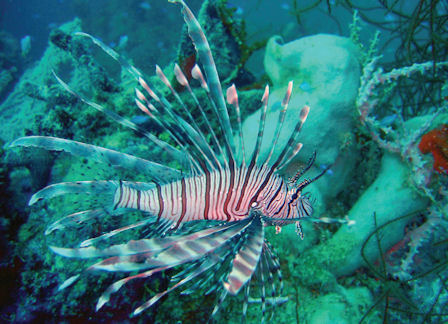NATURALIST’S NOTEBOOK: A Shell’s Life
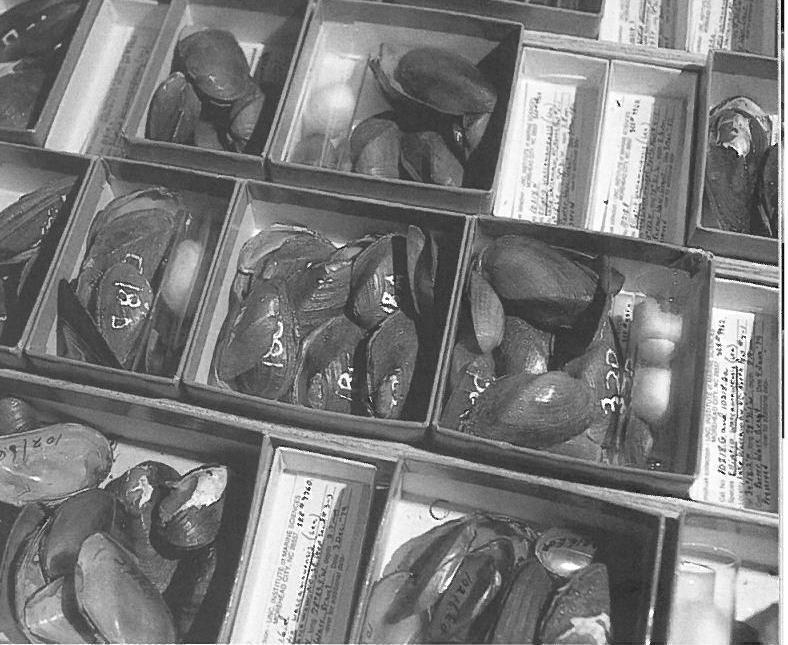
Sometimes, the beach can yield unexpected treasures.
Fourteen-year-old Anne Fogleman made the pages of the News & Observer for her rare find on a recent seashell hunt with the N.C. Shell Club. She was beachcombing at Shackleford Island when she spotted a tropical cockscomb oyster attached to a buoy.
Art Bogan, research curator of aquatic invertebrates at the N.C. Museum of Natural Sciences, identified the shell as Hyotissa mcgintyi. He noted that the discovery was the first of its kind in North Carolina.
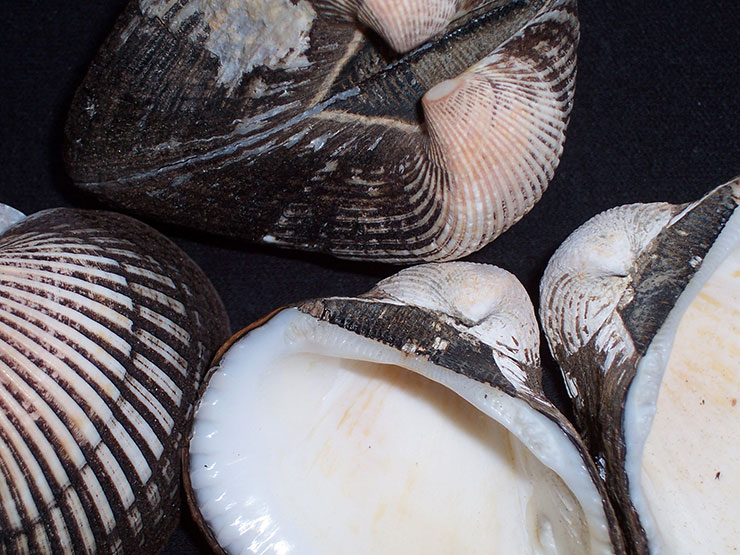
Have you ever wondered about the lives and identities of the seashells you discover on beaches?
Seashells once housed and protected animals called mollusks, serving as a protective external skeleton. Mollusk shells can vary almost like a fingerprint when it comes to colors and patterns.
John Timmerman, Cape Fear Museum exhibit designer and member of the N.C. Shell Club, explains that mollusks have seven classes. The class of mollusks known as Scaphopoda is made up of tusk shells. Cephalopoda includes mollusks that lack shells, otherwise known as octopuses and squids. The Polyplacophora class includes citrons such as the eastern beaded chiton and Monoplacophora includes single-shelled animals, while Aplaophora is composed of deep-ocean worms.
The two classes most commonly found on North Carolina beaches as seashells are Bivalvia and Gastropoda.
BIVALVE BREAKDOWN
Bivalvia is more commonly known as bivalve. The class includes clams, oysters, mussels and scallops. Bivalves have two valves or shells that are hinged together.
Hugh J. Porter, author of Seashells of North Carolina published by North Carolina Sea Grant, notes that bivalves breathe by circulating water in and out of their shells. Incoming water supplies the animal with oxygen while the water that leaves removes carbon dioxide and waste.
Porter writes that some bivalves have siphons, or tubes, that reach out of the valves and circulate water. The circulating water also is a feeding source of bivalves. Particles of plants and animals are moved into the digestive tract when they are taken in with the water.
Bivalves may not do the locomotion dance, but they will use one strong foot to move slowly. The foot extends and contracts until the creature reaches its destination.
Bivalves can use their specialized foot to burrow under sand.
“Some bivalves like mussels can attach to filaments called byssal threads. Others, such as oysters, ‘glue’ themselves to other oysters using a strong adhesive,” says Terri Kirby Hathaway, co-author of North Carolina’s Amazing Coast and marine education specialist with North Carolina Sea Grant.
Hathaway also explains bivalve reproduction. “Bivalves are broadcast spawners, releasing sperm and eggs into the water column where fertilization takes place. Once fertilized, the eggs hatch into larvae called veligers. They float with other tiny animals as part of the zooplankton. They then settle on the ocean floor to begin their lives on, or in, the substrate,” she says.
GROWING GASTROPODS
In contrast to their bivalve cousins, gastropods only need one shell. “A gastropod, or univalve, is a mollusk covered by a single coiled shell in its earliest stages and generally throughout its adult life,” Porter writes.
WHAT MAKES THE SHELL?
Gastropods respire much like bivalves by taking in oxygen-rich water, he adds. Some use siphons as well for this task.
However, grabbing a bite to eat is much more complex. Rather than feeding through water intake, gastropods have tube-like heads complete with mouths, teeth and a toothcovered tongue called a radula. The radula acts like a drill or chainsaw if the animal is carnivorous. The holes that moonsnails leave in the shells of their prey is a perfect example of radula at work. If the mollusk is an herbivore, rocks or other hard surfaces by secreting strong the radula will act as a scraper.
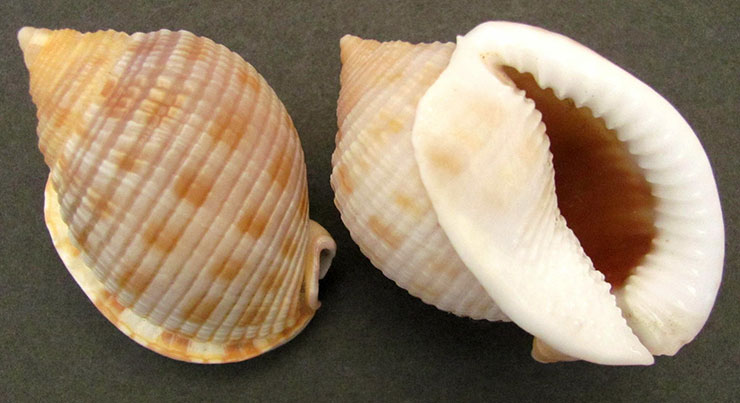
Porter writes, “Most gastropods move along the bottom by sending a series of ripples through their muscular foot.”
Hathaway notes that gastropods are basically marine snails, spending their lives crawling around sandy or muddy bottoms.
Gastropods lay their eggs in blobs or in egg capsules that sometimes wash up and often are mistaken for seaweed, Porter adds.
Mollusks are soft-bodied animals, usually with shells. The fleshy inside of a mollusk is covered by a protective layer of tissue known as the mantle, which produces the shell. The mantle can be roughly viewed as an envelope that surrounds the animal’s soft tissues, Timmerman mentions.
Shells are a lot like human teeth — strong and resistant to erosion. They outlast the gastropods and bivalves that lived in them. Timmerman notes that calcium carbonate is responsible for the shell’s super strength.
During life, the mollusk’s mantle produces the shell, Porter explains. While the shell forms, minerals from the sea and food intake are made into a substance called conchiolin. As the shell grows, calcium carbonate crystals form on the conchiolin. This is responsible for the shell’s texture.
A shell’s color is made in a different way. Color may be in the periostracum, or the outer layer of the shell. “The color of shells is not a function of the calcium, but pigments and other chemicals added during the deposition of the shell,” says the N.C. Museum of Natural Sciences’ Bogan.
“Colors on the surface of the shell are part of the periostracum, not part of the calcium carbonate of the shell,” he adds. “The color can be influenced by encrusting organisms, alga that invade the shell structure, dissolution of the shell, being buried in an anoxic environment which results in black or blackened shells.”
For these reasons, identifying shells based on color is not typically a trustworthy classifier. Many shells are bleached by the sun when they wash up to the shoreline, while most have lots of white already.
Color also can vary greatly from shell to shell. The longer a mollusk shell stays on the beach, the more the original shell color is compromised. Iron oxide-rich water is responsible for turning them reddish brown or yellow. As a result, older shells that have spent more time in the water are typically darker.
A better way to identify shells is by size and shape, using guides such as Sea Grant’s book. Even though these factors are affected by the mollusk’s diet during life and by the environment after death, they are still good indicators.
Ark shaped, clam shaped and razor shaped are just a few descriptions for identifying bivalves. Detailed descriptions can be found in Seashells of North Carolina.
MOLLUSK DAILY LIVING
Gastropods may share characteristics when it comes to anatomy, but during life, they live in various places and eat different dinners.
Scotch bonnets, North Carolina’s state shell, make their homes offshore. They prefer to pass their time preying on keyhole urchins.
They bore a hole in the exoskeleton and eat the animal within, Timmerman says.
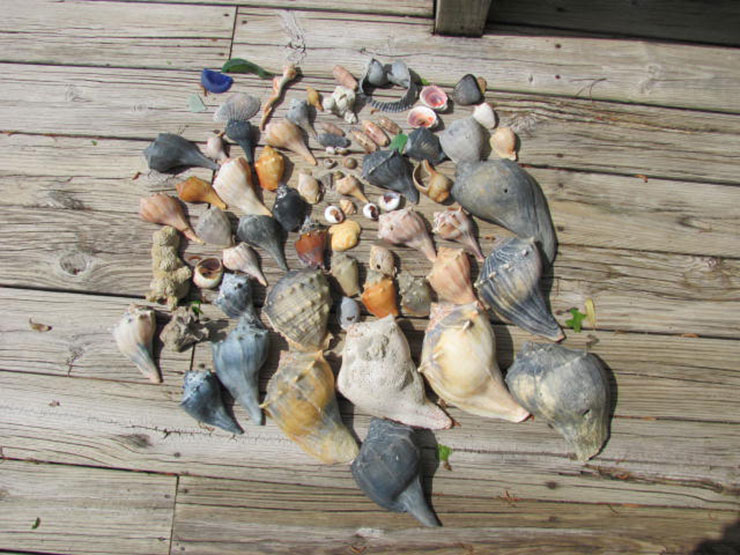
Interestingly, Scotch bonnets exhibit sexual dimorphism, meaning the males and females have different appearances, Timmerman explains. “Females are significantly larger than males,” he says.
Porter writes that Scotch bonnets can be found from North Carolina all the way to Uruguay.
Shells of true tulips are recognizably large and spindle shaped. Their name comes from their resemblance to the tulip flower, Porter explains.
The tulips’ demeanors are just as striking as their appearance. “They are not shy at all. If a diver collects a live animal, they must be sure that their collecting bag stays closed or the tulip will crawl out and escape in short order,” Timmerman mentions.
These mollusks can be found from North Carolina to Brazil, living offshore in sand or hard ground, he notes. Being carnivorous, true tulips don’t mind turning other mollusks into dinner.
“They eat just about anything they can get their snout on including other mollusks, often as large as themselves. They also eat smaller individuals of their own kind,” he adds.
The milk conch is found offshore in sand and vegetation at depths of 70 to 80 feet.
They range from south of Cape Lookout in North Carolina to Florida and Brazil, Porter writes. They depend on the Gulf Stream for their livelihood.
Bivalves have interesting ways of living as well. The rough scallop can be found filter feeding and living offshore, from North Carolina to the West Indies. They are rarely found on beaches, Porter explains.
“They were often caught as bycatch when there was a calico scallop fishery off North Carolina. Lions paw scallops were also caught with calicos. That fishery was quickly exhausted. Rough scallops now only very occasionally turn up on N.C. beaches,” Timmerman says.
The ponderous ark lives in inlets and offshore in large colonies, ranging from Virgina to Texas, Porter writes.
Spending their days filter feeding while partially buried in the sea floor, the ponderous ark puts forth a good deal of effort to go places. “They move slowly by digging into the bottom, pulling themselves forward with their foot,” Timmerman notes.
So how does an animal that can’t make fast getaways survive? The secret is all in the shell. “Their complex hinge and thick shells enable them to ward off many would-be predators seeking to make a meal of them,” Timmerman adds.
To learn more about mollusks, read Seashells of North Carolina, available from your local bookstores. Or order from www.ncseagrant.org.
This article was published in the Autumn 2013 issue of Coastwatch.
For contact information and reprint requests, visit ncseagrant.ncsu.edu/coastwatch/contact/.
- Categories:

